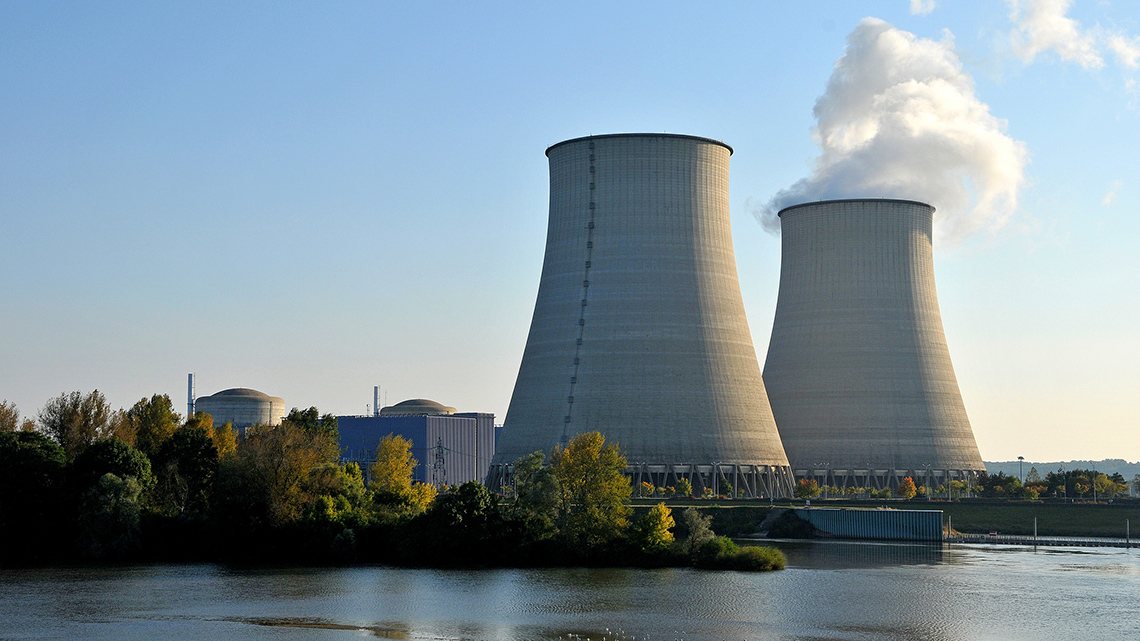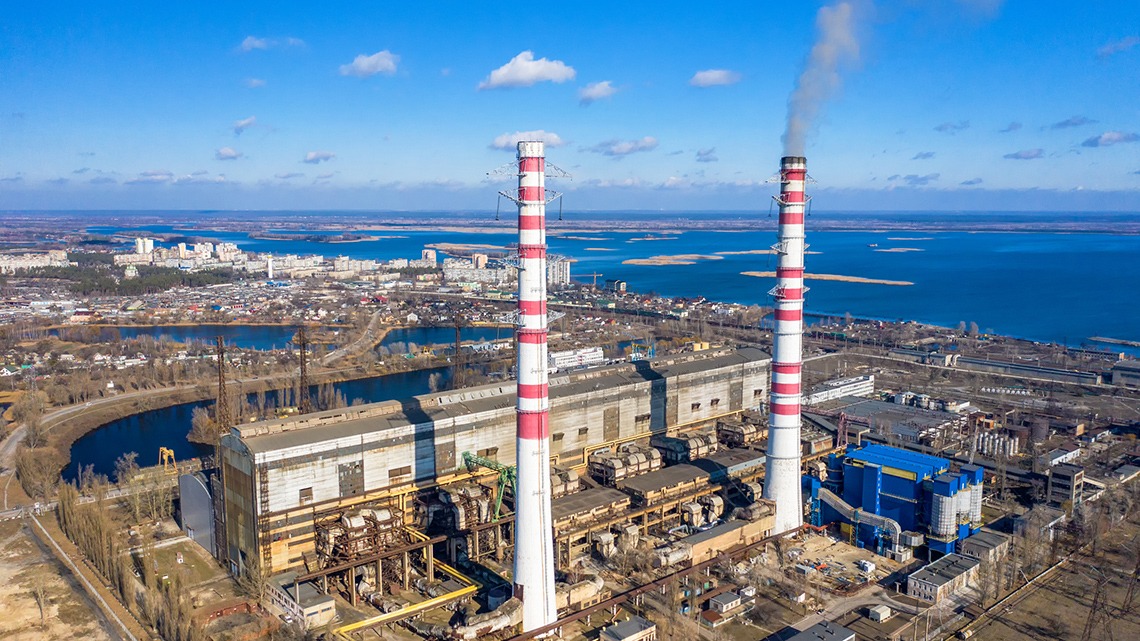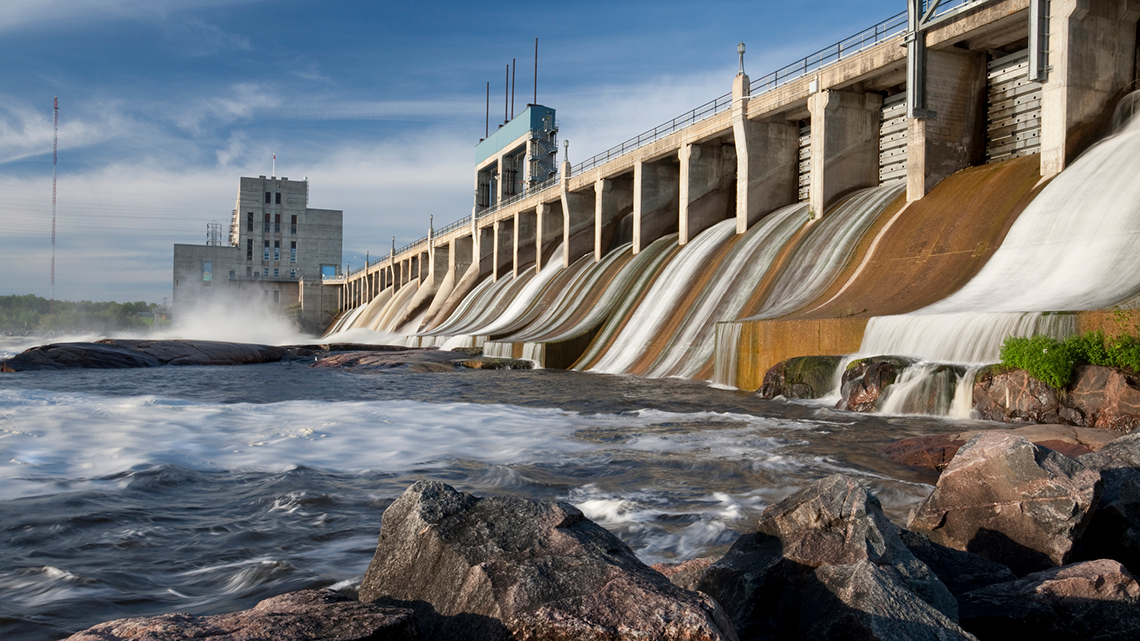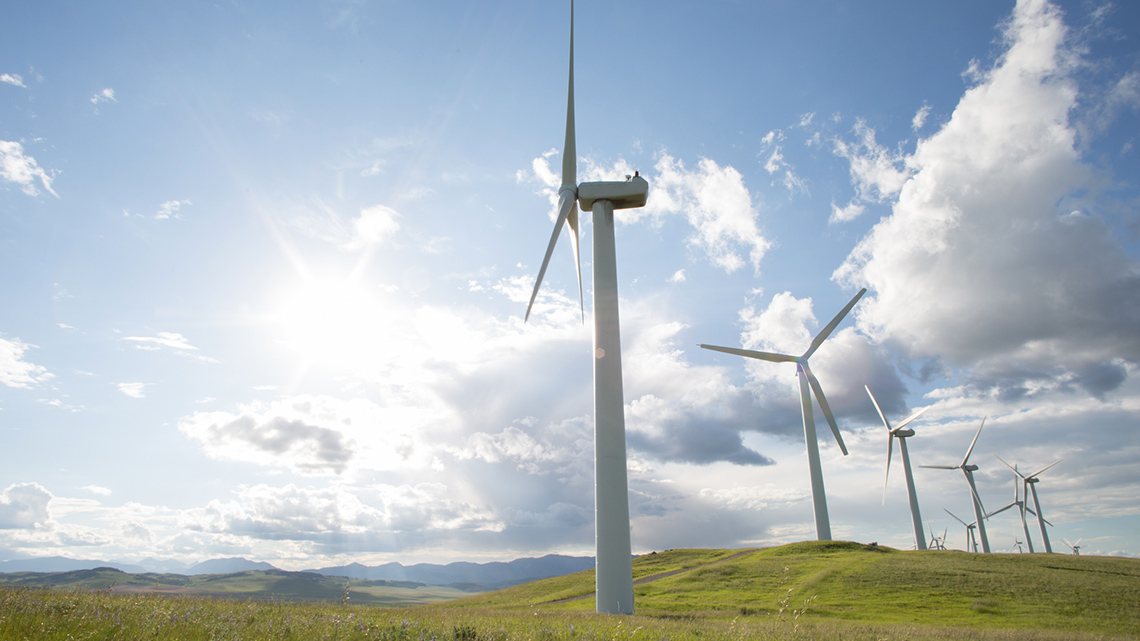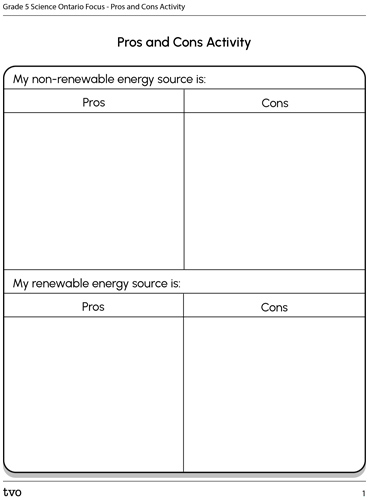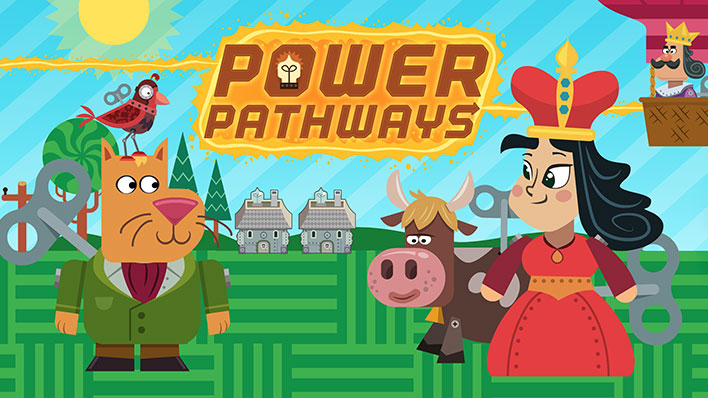Minds On
Electricity generation in Ontario
Ontario gets its electricity from diverse sources of energy supplied by a large number of generating stations located across the province.
Electrical energy can be transformed into other forms of energy. Other forms of energy can be transformed into electrical energy.
Explore the following types of energy sources:
Brainstorm
Electric devices
Let’s brainstorm a list of devices that use electricity. Think about a person’s daily life at home, at school, or in the community. What might they encounter that uses electricity? How can you tell when electrical energy is being used? How do you think this energy form has been harnessed?
Action
Electricity generation
This learning activity highlights people, places, or innovations that relate directly to the province of Ontario. Enjoy the exploration!

Throughout Ontario, power is produced, or generated, using many different sources and methods.
Do you know the types of generating stations in Ontario?
There are hydroelectric, wind, thermal, nuclear, and solar generating stations. While all generating stations operate differently, they all work to do the same job, which is to convert kinetic energy into electrical energy. Investigate the various types of generating stations that exist in Ontario below.
Generating stations
Press the following tabs to access the different types of power stations.
Most hydroelectric stations use the natural drop of a river, like waterfalls, rapids, or a dam built across a river to provide the change in height needed to produce kinetic energy (energy of movement).
Water is collected in the reservoir, then channeled via the stations intake into a pipe called a penstock that carries the water down to the turbine.
As the water flows down the penstock, the water pressure increases.
This pressure causes the turbine to spin, which in turn spins a generator.

Water is collected in the reservoir, then channeled via the stations intake into a pipe called a penstock that carries the water down to the turbine.
What do you think are some of the advantages and disadvantages of having a hydroelectric dam?
Consider the initial cost and work required to design and build a hydroelectric dam, as well as the maintenance.
Wind turbines work much like hydroelectric stations. Instead of moving water, they use wind energy (energy of moving air) to create kinetic energy. Wind causes the turbine to spin, which is connected via gears to a generator.
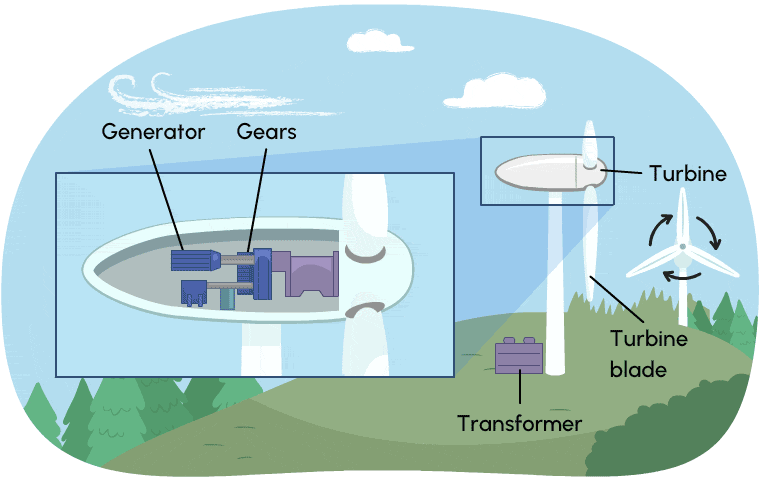
Where do you think most wind turbines would need to be located? Do you think this is a suitable energy option for everyone? Why or why not?
Think about the size of the wind turbine and the flow of wind.
Thermal generating stations convert the chemical energy (energy held in chemical bonds) in coal, oil, or natural gas into kinetic energy.
Thermal generating stations use steam to spin their turbines. To create the steam, water is heated in boiler tubes that surround a large industrial furnace that burns coal, oil, or natural gas, depending on the type of generating station.
The steam is then transferred under pressure to the turbine, causing the turbine to spin and in turn, spin the generator.
The steam from the turbine condenses back to a liquid using cooling water from a lake, and is pumped back to the boiler, where it is reheated to continue the process.

Thermal generating stations use steam to spin their turbines. To create the steam, water is heated in boiler tubes that surround a large industrial furnace that burns coal, oil, or natural gas, depending on the type of generating station.
How does a thermal generator work in a cycle? Can you explain that cycle?
Consider how the same resource is used over and over again.
Instead of burning coal, oil, or natural gas, Canada’s CANDU nuclear reactors use the fission of natural uranium (a radioactive metallic element) to convert nuclear energy (energy that holds the nucleus together in an atom) into kinetic energy.
Unlike the other fuels, uranium is not burned. Uranium atoms release large amounts of heat through a process called fission (splitting of atoms).
In a CANDU reactor, the fission process heats up heavy water (water with hydrogen replaced by one of its isotopes called deuterium, which in turn heats up ordinary water in a boiler. The steam is piped over to the turbine hall, where it drives the huge turbine and generator that produces the electricity we use.

In a CANDU reactor, the fission process heats up heavy water (water with hydrogen replaced by one of its isotopes called deuterium, which in turn heats up ordinary water in a boiler. The steam is piped over to the turbine hall, where it drives the huge turbine and generator that produces the electricity we use.
How are nuclear energy and thermal energy similar? How are they different?
Consider the process that each use, as well as the resources.
A solar farm is a large collection of photovoltaic (PV) solar panels that absorb energy from the sun, convert it into electricity and send that electricity to the power grid for distribution.
Solar farms — which are sometimes called solar parks or photovoltaic power stations — are usually mounted to the ground instead of rooftops and come in all shapes and sizes.
Utility-scale solar farms consist of hundreds of thousands of solar panels that absorb energy from the sun, generate an electric current, and distribute that power on high-voltage power lines.
The electricity travels along those power lines to the electricity grid, eventually making its way to your home.
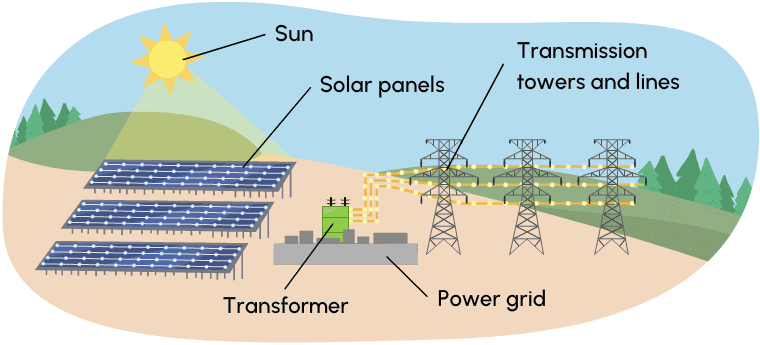
What might be one advantage and disadvantage of a solar farm?
Think about the resource that it uses to operate and its availability.
Check your understanding of the various types of electricity generating stations using the matching activity below. Match the type of generating station to its description.
For each term, item, etc., select the corresponding definition, description, etc.
Renewable or non-renewable?
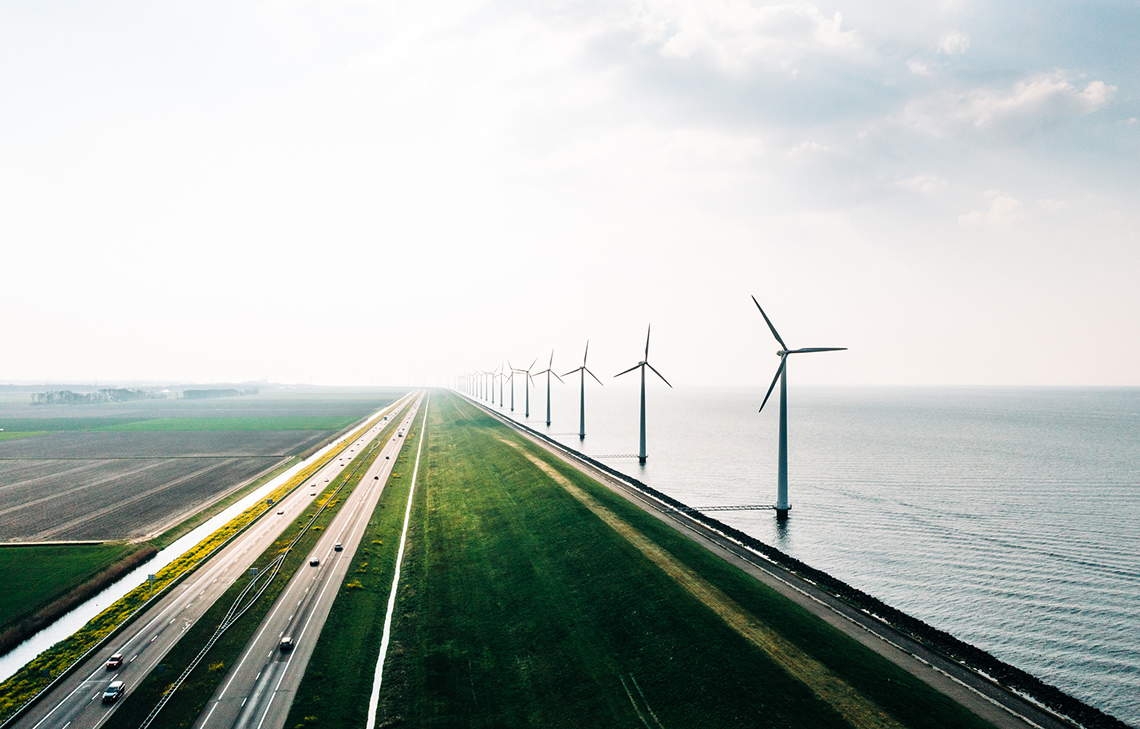
Humans use energy from all kinds of different sources! The power of wind, water, and the sunlight all provide humans with energy. The resources that are used to generate energy are considered either renewable or non-renewable. Explore what this means below.
Renewable energy is from a source that is not depleted when used. This type of energy is limitless, as it continues to be produced naturally in our environment.
A non-renewable resource is a natural substance that is not replenished with the speed at which it is consumed. The supply is limited, and it will ultimately be gone one day.
After exploring each type of energy power stations, which of the sources do you think are renewable or non-renewable?
For this activity, sort the items as renewable or non-renewable sources.
Choose “Renewable” if you think the energy is a renewable source.
Choose “Non-renewable” if you think the energy is a non-renewable source.
Did You Know?
Megawatts
Hydroelectric power generates the most electricity in megawatts (MW).
And biomass generates the least electricity in megawatts.
What is a megawatt?
You may have heard of kilowatts before – as in kilowatt-hours for energy consumptions. The term megawatt is one million watts!
A watt (W) is a unit of power, the measure of the rate of energy conversion.
Pros and cons
There are pros and cons to all methods of producing electricity and they all have an impact on the environment. Explore some of the environmental impacts below.
Press the following tabs to access the impacts of generating electricity.
Hydroelectric plants produce almost no greenhouse gases (e.g. carbon dioxide) but construction may have required flooding of land and disruption of animal and human habitats.
Nuclear plants produce almost no greenhouse gases, but the question of disposal of spent nuclear fuel (uranium involved in fission) has yet to be resolved.
Thermal plants, particularly coal-fired ones, produce significant greenhouse gas emissions.
Wind turbines produce almost no greenhouse gases, but they require large amounts of land and significantly impact bird migration routes. Also, since wind turbines have a poor efficiency (percentage of time in which they run), large numbers of them are needed to produce meaningful amounts of electricity. For example, wind turbines can only generate electricity when the wind is the right speed, which in Ontario is only about 20 percent of the time.
As you explored the pros and cons of renewable and non-renewable energy sources, you may have noticed that some energy sources negatively impact the environment and therefore contribute to climate change. Specifically, some sources of energy contribute significantly to greenhouse gases while fueling climate change. An increase in greenhouse gases creates a warming effect on the planet, but there are many different things that humans can do to help!
Explore the following video entitled “Climate Strike” to learn more about how humans can help the planet and mitigate the effects of greenhouse gases.
- Did you notice any information about energy sources specifically?
- What are some things that you can do to mitigate the effects of climate change and help contribute to a healthier planet?
Press ‘Possible Answer’ to access some possible answers to the questions.
- To reduce energy consumption, we can: turn off the lights when we are not using them, stop burning fossil fuels, use less energy in our homes, turn down the thermostat (use less heat),
- Pick up garbage, turn the taps off when brushing teeth, turn off lights, plant trees or gardens, consider food choices such as eating less red meat and wasting food, walk or bike instead of driving.
Consolidation
Task 1: Pros and cons of energy sources
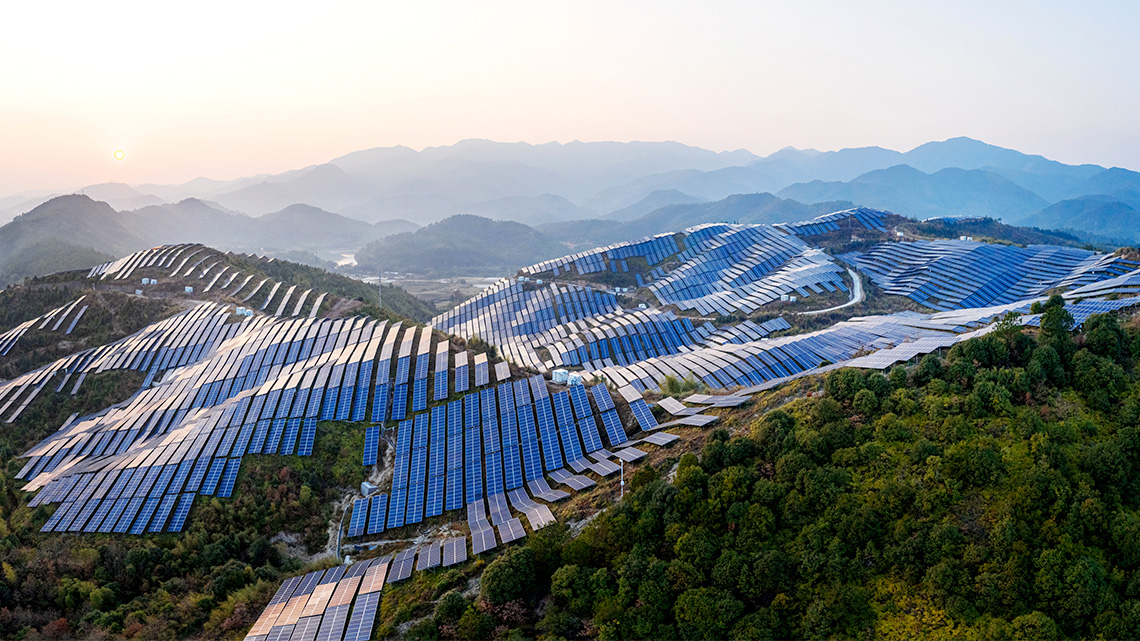
Choose one renewable energy source and one non-renewable energy source that we have explored throughout this learning activity and record some of the pros and cons. Check your answers using the answer key provided.
Press ‘Definition’ to access the meaning of Pros and Cons.
Pros and Cons: pros are the arguments supporting an idea or topic and cons are the arguments against an idea or topic.
Consider the following:
- How do non-renewable resources contribute to climate change? (i.e., air pollution)?
- Does renewable energy impact climate change?
Complete the “Pros and Cons Activity” in your notebook or using the following fillable and printable document. If you would like, you can use speech-to-text or audio recording tools to record your thoughts.
|
My non-renewable energy source is: |
|
|---|---|
|
Pros |
Cons |
|
My renewable energy source is: |
|
|---|---|
|
Pros |
Cons |
Press ‘Answer Key’ to compare your pros and cons list.
|
Energy Source |
Pros |
Cons |
|---|---|---|
|
Hydroelectric Dams (Renewable) |
Emit limited greenhouse gases Water is renewable |
May destroy habitats Can cause flooding and land disruption |
|
Wind Turbines (Renewable) |
Emit virtually no greenhouse gases Wind is renewable |
Require large amounts of land Impact bird migration routes Require specific wind speed |
|
Thermal Energy (Non-Renewable) |
Reliable |
Produce a lot of greenhouse gases Uses non-renewable resource |
|
Nuclear Energy (Non-Renewable) |
Produces almost no greenhouse gases |
Uses non-renewable resource Issues with disposal of nuclear fuel |
|
Solar Energy (Renewable) |
Renewable energy source |
Needs sun Expensive to install Takes up a lot of space |
Task 2: The future of electricity
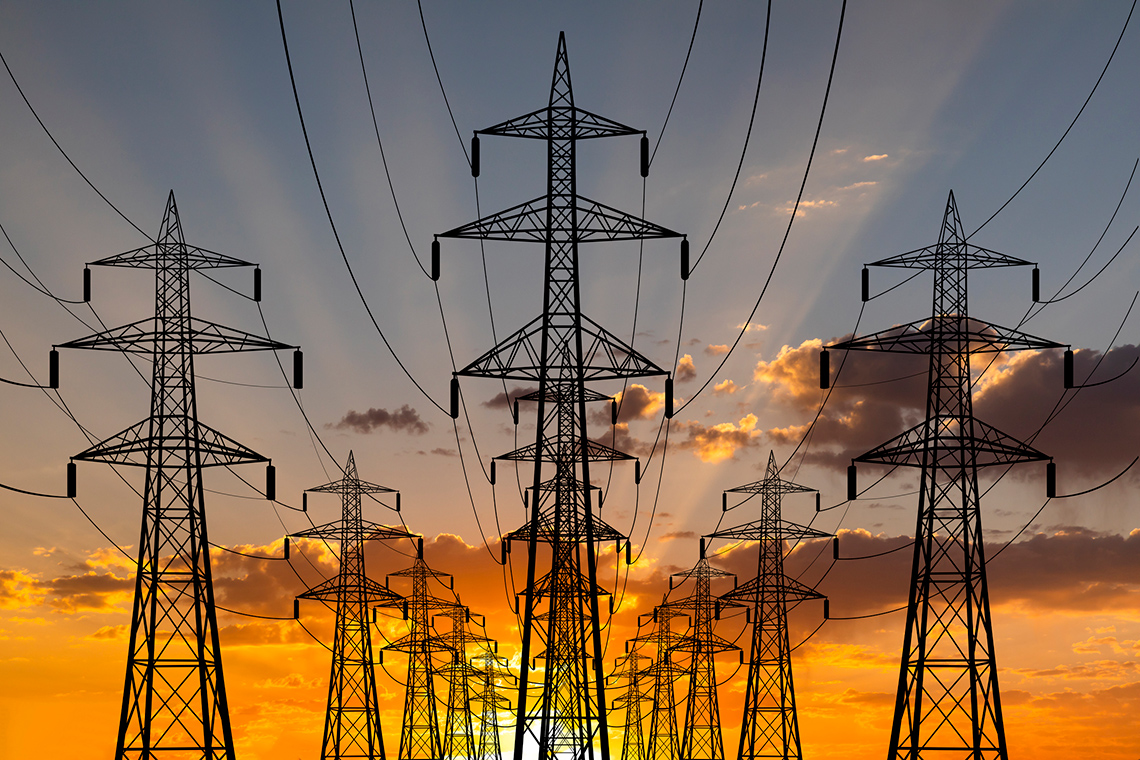
Electricity plays a vital role in our lives today. Ontario’s ability to produce electricity has grown dramatically over the past 100 years, but so has its demand for electricity. As society continues to grow, there will be an increased requirement of electricity, but also an increase requirement for it to be produced in a way that is environmentally friendly and with renewable resources.
You have been asked to share your knowledge of generating electricity with a community. They have asked you to respond to the following questions and recommend what type of energy source they should consider in the future.
Create a short presentation using a method of your choice that answers the following questions:
- Given the increases in demand for electricity and the concerns about the environmental impact of generating electricity, how will future demand be met?
- Which type of energy source should we consider using in the future?
- Why is this important?
- Which type of energy source would you not recommend we continue to use in the future? Why?
Record your ideas in a notebook or another method of your choice.
Reflection
As you read through these descriptions, which sentence best describes how you are feeling about your understanding of this learning activity? Press the button that is beside this sentence.
I feel...
Now, record your ideas using a voice recorder, speech-to-text, or writing tool.
Press ‘Discover More’ to extend your skills.
Discover MoreIt’s time to play a game! You will now access “Power Pathways.”
